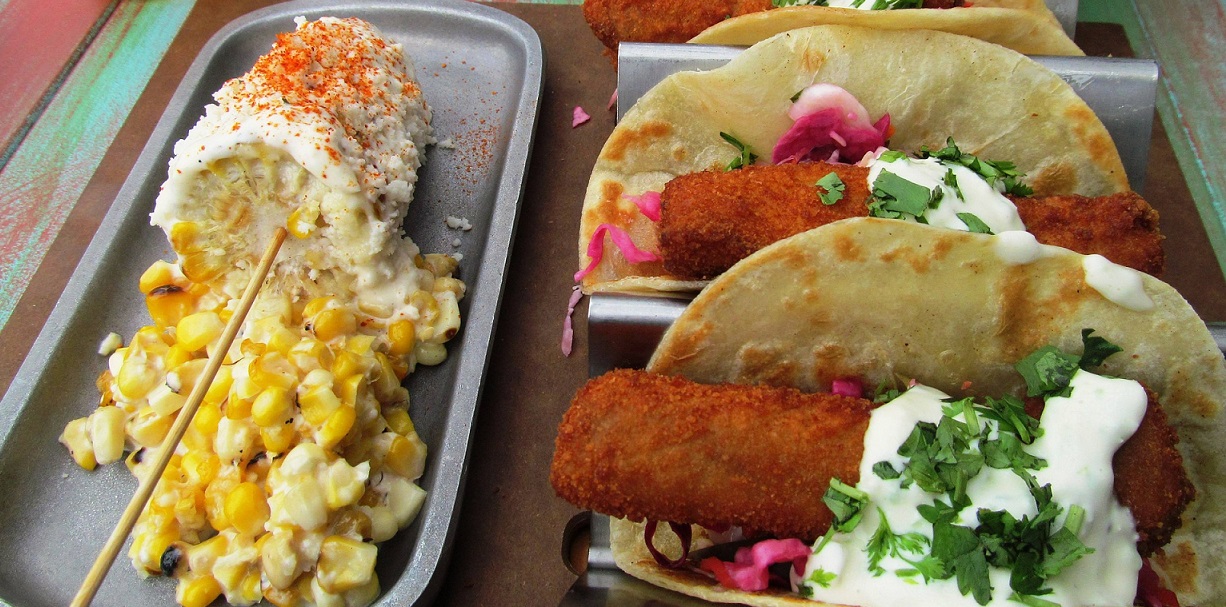Consumer interest in snacking, street food and authentic international cuisine is creating opportunities for foodservice operators to entice diners with regional Hispanic snacks, according to a report from Technomic and the J.M. Smucker Company.
Items that already have a high penetration on US menus — such as tacos — are most likely to have appeal for US diners. However, desire to discover new foods is fueling interest in lesser-known regional dishes as well.
Regional tacos appealed as a snack to 60% of those surveyed by Technomic, and the same percentage also said they found tamales and chilaquiles appealing. Menu mentions of chilaquiles, a Mexican dish made with fried tortillas layered with salsa, increased 9.4% between 2016 and 2017, according to Technomic data.
While Salvadoran pupusas and Venezuelan arepas aren’t as familiar to US diners as tacos, they share the same street food appeal. Sixty-two percent of consumers said they like to eat snacks on the go, according to Technomic, and street food has also piqued the interest of chefs. Dishes inspired by street food were named a top trend by chefs surveyed for the National Restaurant Association’s 2018 What’s Hot culinary report. Drawing attention to their origins in menu descriptions can help restaurants drive sales of these items.
“Because both arepas and pupusas have ingredients that most American consumers are familiar with, operators should consider menuing these items with more detailed descriptions so they don’t seem so foreign to diners,” the report says.
When it comes to trying unfamiliar items, more than half (55%) of consumers said they are more likely to try new foods as a snack than as a full meal. Menuing Latin American foods as snacks can help convince consumers to take the plunge and discover a new dish.
Including a lesser-known ingredient as component in a more familiar dish is also a smart tactic for driving orders of Latin snacks. For example, the Mexican corn fungus huitlacoche is still a niche ingredient in the US, but including it in a quesadilla or other tortilla-based snack can boost its appeal with diners, the report says. Eateries can feature pikliz, a Haitian condiment made with pickled cabbage, carrots and peppers alongside empanadas or fritters. In addition to serving it alongside something familiar, the topping’s fiery heat is also a selling point. More than two-fifths of consumers seek out spicy snacks, according to the report, and “showcasing snacks with hot ingredients that are prominent in regional Latin cookery, such as jalapenos and habaneros, is one way to appeal to younger diners in particular.”
More than half of the millennials and members of Generation Z surveyed said they seek out spicy snacks. These younger demographics showed the highest overall interest in eating Latin American snacks throughout the day, particularly in the afternoon, evening and late night dayparts. Adding Latin American fare to bar food and late night menus can help eateries capture these important demographics. “Downsizing traditional Latin main dishes into smaller
snack sizes is one way to appeal to those who want to see more regional Hispanic snacks on menus,” the report says. “Mini tacos, empanadas or tortas are such dishes that can easily be taken on the go or shared at a table among friends or family.”
__________________________________________________
If you enjoyed this article, join SmartBrief’s email list for more stories about the food and beverage industry. We offer 20 newsletters covering the industry from restaurants to food manufacturing. And be sure to follow us on Twitter for the latest industry news.
